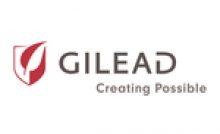Shionogi Granted New Technology Add-on Payment For FETROJA� (Cefiderocol) by CMS


Add-on Payment to Reimburse Hospitals up to 75 percent of the cost of FETROJA in Hospital Inpatient Setting
OSAKA, Japan and FLORHAM PARK, N.J.–(BUSINESS WIRE)–Shionogi & Co., Ltd. (hereafter �Shionogi) today announces that the Centers for Medicare & Medicaid Services (CMS) has granted a new technology add-on payment (NTAP) for FETROJA® (cefiderocol) when administered in the hospital inpatient setting. FETROJA is indicated for complicated urinary tract infections, including pyelonephritis, caused by Gram-negative pathogens in adult patients with limited or no treatment options.
The NTAP will provide hospitals with a payment, in addition to the standard-of-care Diagnostic Related Group (DRG) reimbursement, of up to 75 percent of the average cost of FETROJA for a period of two to three years, effective in the new fiscal year starting on October 1, 2020. CMS has assigned a maximum payment of $7,919.86 for a patient treated with FETROJA.
The NTAP designation for FETROJA underscores the need for new antimicrobial drugs for patients fighting drug-resistant infections and highlights FETROJAs potential in filling an unmet medical need, said Akira Kato, Ph.D., president and CEO at Shionogi Inc. We believe the decision to include FETROJA in the NTAP program is an important step and will help increase access to this important antibiotic.
The CMS NTAP program is designed to encourage the utilization of new medical technologies in the hospital inpatient setting to treat Medicare patients. The pipeline of antibiotics that target antimicrobial resistance has greatly diminished. In addition to the CMS NTAP program, an urgent need exists for reimbursement reform and new economic incentives to encourage development and commercialization of antibiotics, said Kato.
About FETROJA® (cefiderocol) for injection
FETROJA® (cefiderocol) is a cephalosporin antibiotic with a novel mechanism for penetrating the outer cell membrane of Gram-negative pathogens by acting as a siderophore. In addition to entering cells by passive diffusion through porin channels, FETROJA binds to ferric iron and is actively transported into bacterial cells through the outer membrane via the bacterial iron transporters, which function to incorporate this essential nutrient for bacteria. These mechanisms allow FETROJA to achieve high concentrations in the periplasmic space where it can bind to penicillin-binding proteins and inhibit cell wall synthesis in the bacterial cells. FETROJA has also demonstrated in vitro activity against certain bacteria that contain very problematic resistant enzymes such as ESBLs, AmpC, serine- and metallo-carbapenemases. Data from multinational surveillance studies for FETROJA demonstrated potent in vitro activity against a wide spectrum of Gram-negative pathogens including carbapenem-resistant A. baumannii, P. aeruginosa, Enterobacteriaceae, and S. maltophilia. The clinical significance of the in vitro data is unknown. FETROJA has poor in vitro activity against Gram-positive or anaerobic bacteria.
Shionogi submitted a supplemental New Drug Application (sNDA) to the U.S. Food and Drug Administration for FETROJA and was granted Priority Review designation with a Prescription Drug User Fee Act (PDUFA) date of September 27, 2020. The company submitted the sNDA for the treatment of adult patients with hospital-acquired bacterial pneumonia and ventilator-associated bacterial pneumonia caused by susceptible Gram-negative pathogens.
Cefiderocol, under the brand name FETCROJA®, is approved by the European Commission for the treatment of infections due to aerobic Gram-negative bacteria in adults 18 years or older with limited treatment options.
Indication and Usage from USPI
FETROJA® (cefiderocol) is indicated in patients 18 years of age or older who have limited or no alternative treatment options for the treatment of complicated urinary tract infections (cUTI), including pyelonephritis caused by the following susceptible Gram-negative microorganisms: Escherichia coli, Klebsiella pneumoniae, Proteus mirabilis, Pseudomonas aeruginosa, and Enterobacter cloacae complex.
Approval of this indication is based on limited clinical safety and efficacy data for FETROJA.
Usage
To reduce the development of drug-resistant bacteria and maintain the effectiveness of FETROJA and other antibacterial drugs, FETROJA should be used only to treat or prevent infections that are proven or strongly suspected to be caused by susceptible bacteria.
Important Safety Information
Contraindications
FETROJAis contraindicated in patients with a known history of severe hypersensitivity to FETROJA or other beta-lactam antibacterial drugs, or any other component of FETROJA.
Warnings and Precautions
Increase in All-Cause Mortality in Patients with Carbapenem-Resistant Gram-Negative Bacterial Infections
An increase in all-cause mortality was observed in patients treated with FETROJA as compared to best available therapy (BAT) in a multinational, randomized, open-label trial in critically-ill patients with carbapenem-resistant Gram-negative bacterial infections (NCT02714595). Patients with nosocomial pneumonia, bloodstream infections, sepsis, or cUTI were included in the trial. BAT regimens varied according to local practices and consisted of 1 to 3 antibacterial drugs with activity against Gram-negative bacteria. Most of the BAT regimens contained colistin.
The increase in all-cause mortality occurred in patients treated for nosocomial pneumonia, bloodstream infections, or sepsis. The 28-Day all-cause mortality was higher in patients treated with FETROJA than in patients treated with BAT [25/101 (24.8%) vs. 9/49 (18.4%), treatment difference 6.4%, 95% CI (-8.6, 19.2)]. All-cause mortality remained higher in patients treated with FETROJA than in patients treated with BAT through Day 49 [34/101 (33.7%) vs. 10/49 (20.4%), treatment difference 13.3%, 95% CI (-2.5, 26.9)]. Generally, deaths were in patients with infections caused by Gram-negative organisms, including nonfermenters such as Acinetobacter baumannii, Stenotrophomonas maltophilia, and Pseudomonas aeruginosa, and were the result of worsening or complications of infection, or underlying comorbidities. The cause of the increase in mortality has not been established. The safety and efficacy of FETROJA have not been established for the treatment of nosocomial pneumonia, bloodstream infections or sepsis.
Reserve FETROJA for use in patients who have limited or no alternative treatment options for the treatment of cUTI. Closely monitor the clinical response to therapy in patients with cUTI.
Hypersensitivity Reactions
Serious and occasionally fatal hypersensitivity (anaphylactic) reactions and serious skin reactions have been reported in patients receiving beta-lactam antibacterial drugs. Hypersensitivity was observed in FETROJA clinical trials. These reactions are more likely to occur in individuals with a history of beta-lactam hypersensitivity and/or a history of sensitivity to multiple allergens. There have been reports of individuals with a history of penicillin hypersensitivity who have experienced severe reactions when treated with cephalosporins. Before therapy with FETROJA is instituted, inquire about previous hypersensitivity reactions to cephalosporins, penicillins or other beta-lactam antibacterial drugs. Discontinue FETROJA if an allergic reaction occurs.
Clostridioides difficile-associated Diarrhea (CDAD)
Clostridioides difficile-associated diarrhea (CDAD) has been reported for nearly all systemic antibacterial agents, including FETROJA. CDAD may range in severity from mild diarrhea to fatal colitis. Treatment with antibacterial agents alters the normal flora of the colon and may permit overgrowth of C. difficile.
Careful medical history is necessary because CDAD has been reported to occur more than two months after the administration of antibacterial agents.
If CDAD is suspected or confirmed, antibacterial drugs not directed against C. difficile may need to be discontinued. Manage fluid and electrolyte levels as appropriate, supplement protein intake, monitor antibacterial treatment of C. difficile, and institute surgical evaluation as clinically indicated.
Seizures and Other Central Nervous System (CNS) Adverse Reactions
Cephalosporins, including FETROJA, have been implicated in triggering seizures. Nonconvulsive status epilepticus (NCSE), encephalopathy, coma, asterixis, neuromuscular excitability, and myoclonia have been reported with cephalosporins particularly in patients with a history of epilepsy and/or when recommended dosages of cephalosporins were exceeded due to renal impairment. Adjust FETROJA dosing based on creatinine clearance. Anticonvulsant therapy should be continued in patients with known seizure disorders. If CNS adverse reactions including seizures occur, patients should undergo a neurological evaluation to determine whether FETROJA should be discontinued.
Development of Drug-Resistant Bacteria
Prescribing FETROJA in the absence of a proven or strongly suspected bacterial infection or a prophylactic indication is unlikely to provide benefit to the patient and may increase the risk for development of drug-resistant bacteria.
Adverse Reactions
The most common adverse reactions occurring in (>2%) of patients receiving FETROJA compared to imipenem/cilastatin in clinical trials were: diarrhea (4% vs 6%), infusion site reactions (4% vs 5%), constipation (3% vs 4%), rash (3% vs <1%), candidiasis (2% vs 3%), cough (2% vs <1%), elevations in liver tests (2% vs <1%), headache (2% vs 5%), hypokalemia (2% vs 3%), nausea (2% vs 4%), and vomiting (2% vs 1%).
Report side effects to the FDA at 1-800-FDA-1088 or http://www.fda.gov/medwatch. Report side effects to Shionogi Inc. at 1-800-849-9707.
For full Prescribing Information, please visit Shionogi.com.
Shionogis commitment to fighting antimicrobial resistance
Shionogi has a strong heritage in the field of anti-infectives and has been developing antimicrobial therapies for more than 60 years. Shionogi is proud to be one of the few large pharmaceutical companies that continues to focus on research and development in anti-infectives. The company invests the highest proportion of its pharmaceutical revenues in relevant anti-infectives R&D compared to other large pharmaceutical companies.1
For more information please refer to: https://www.shionogi.com/global/en/sustainability/amr.html.
About Shionogi
Shionogi & Co., Ltd. is a Japanese major research-driven pharmaceutical company dedicated to bringing benefits to patients based on its corporate philosophy of supplying the best possible medicine to protect the health and wellbeing of the patients we serve. The company currently markets products in several therapeutic areas including anti-infectives, pain, cardiovascular diseases, and gastroenterology. Our pipeline is focused on infectious disease, pain, CNS, and oncology. For more information on Shionogi & Co., Ltd., visit https://www.shionogi.com/global/en/. Shionogi Inc. is the U.S. subsidiary of Shionogi & Co., Ltd. based in N.J. For more information on Shionogi Inc., please visit www.shionogi.com.
Forward Looking Statement
This announcement contains forward-looking statements. These statements are based on expectations in light of the information currently available, assumptions that are subject to risks and uncertainties which could cause actual results to differ materially from these statements. Risks and uncertainties include general domestic and international economic conditions such as general industry and market conditions, and changes of interest rate and currency exchange rate. These risks and uncertainties particularly apply with respect to product-related forward-looking statements. Product risks and uncertainties include, but are not limited to, completion and discontinuation of clinical trials; obtaining regulatory approvals; claims and concerns about product safety and efficacy; technological advances; adverse outcome of important litigation; domestic and foreign healthcare reforms and changes of laws and regulations. Also, for existing products, there are manufacturing and marketing risks, which include, but are not limited to, inability to build production capacity to meet demand, unavailability of raw materials and entry of competitive products. The company disclaims any intention or obligation to update or revise any forward-looking statements whether as a result of new information, future events or otherwise.
References
- Antimicrobial Resistance Benchmark 2020. https://accesstomedicinefoundation.org/media/uploads/downloads/5f3f76733efaa_Antimicrobial_Resistance_Benchmark_2020.pdf Last accessed July 2020
Contacts
Shionogi & Co., Ltd.
Corporate Communications
Telephone: +81-6-6209-7885
Fax: +81-6-6229-9596
Shionogi Inc. U.S. Media Contact
Lindsay Bohlander, Director, Advocacy & PR
+1 973-307-3718
lindsay.bohlander@shionogi.com
Recent Posts
Ascott Expands Pet-Friendly Offerings With lyf one-north Singapore
lyf one-north Singapore joins Citadines Balestier Singapore, Citadines Raffles Place Singapore, and Oakwood Studios Singapore…
2025 China corporate payment survey: Longer payment terms helped mitigate increases in payment delays
HONG KONG SAR - Media OutReach Newswire - 1 April 2025 - Coface's survey on…
Ingdan, Inc. Announces 2024 Annual Results
Highlights of the Annual Results for the Year Ended December 31, 2024: With rising demand…
Diginex Limited and Forvis Mazars Announce Strategic Alliance to Enhance Supply Chain Risk Assessment with diginexLUMEN
LONDON, UK - Media OutReach Newswire - 31 March 2025 – Diginex Limited ("Diginex" or…
Apex Lin, Pang-Soong Receives Special Jury Award from Asia Design Prize, Recognizing His Long-term Contributions to Asian Design
TAIPEI, TAIWAN - Media OutReach Newswire - 31 March 2025 - The 2025 ADP (Asia…
From Hong Kong to Global: Laservall Drives New Industrialisation and Microelectronics Innovation with HKD 300M Investment
HKSTP park company Laservall aims to advance high-precision laser technology with AI-driven automation, empowering advanced…

